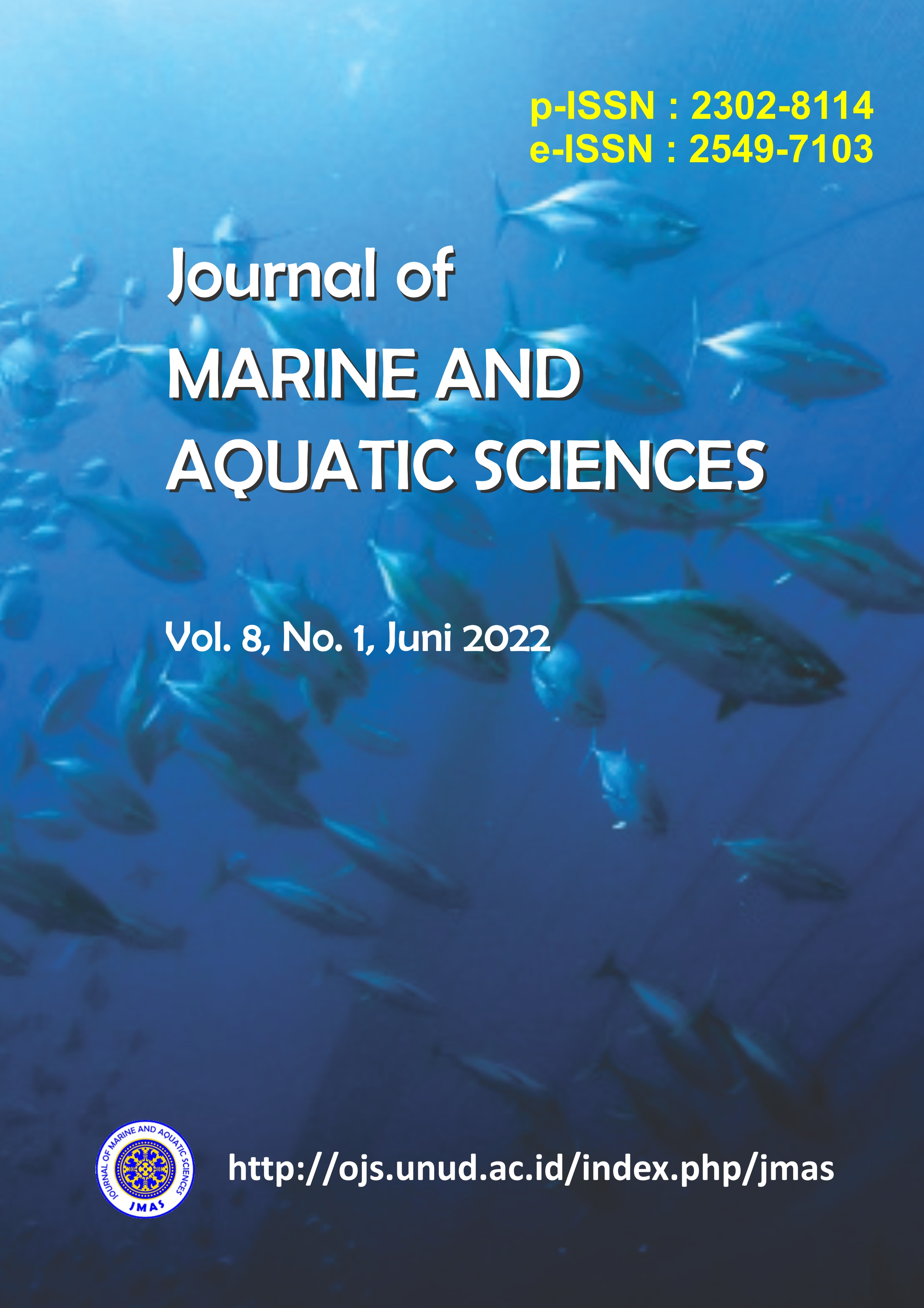Distribusi Spasial Plankton Di Selat Makassar
Abstract
The Makassar Strait is Arlindo's first passage, where the first passage transfers most of the water to the Lombok Strait. This cross flow of Indonesia makes Indonesian waters, especially the eastern part, become fertile due to the upwelling process and the process of mixing and interaction of water and air which causes in the deep sea layer is eutrofik. Some research on plankton in the Makassar Strait still revolves around chlorophylla, while research on plankton itself is still lacking. Therefore, it is important to conduct research on the spanky plankton distribution in the Makassar Strait which can be used as basic information about the influence of Arlindo on the structure of the plankton community in the Makassar Strait. The method of taking plankton uses the pour method. This method is done by taking water using a water sampler of 100 liters at a depth of 0 meters, 100 meters and 250 meters. The Bacillariophyceae class that is often found with high abundance is Chaetoceros and Nitzhia. The Cyanophyceae class which is often found with relatively high abundance is Oscillatoria while the Chlorophyceae class found is the genus Chroococus. The hexanaupilia class that is often found with high relative abundance is the genus Cyclops. The Malacostraca class found in the Makassar Strait is the genus Naupilii while the Maxilopoda class found in the Makassar Strait is the genus Copepod. The Bacillariophyceae class that is often found with high abundance is Chaetoceros and Nitzhia. The Cyanophyceae class which is often found with relatively high abundance is Oscillatoria while the Chlorophyceae class found is the genus Chroococus.
Downloads

This work is licensed under a Creative Commons Attribution 3.0 International License.
Copyright 2012 - 2023 Journal of Marine and Aquatic Sciences (JMAS)
Published by Fakultas Kelautan dan Perikanan Universitas Udayana, Denpasar, Bali, Indonesia
JMAS (p-ISSN 2302-8114; e-ISSN 2549-7103)


